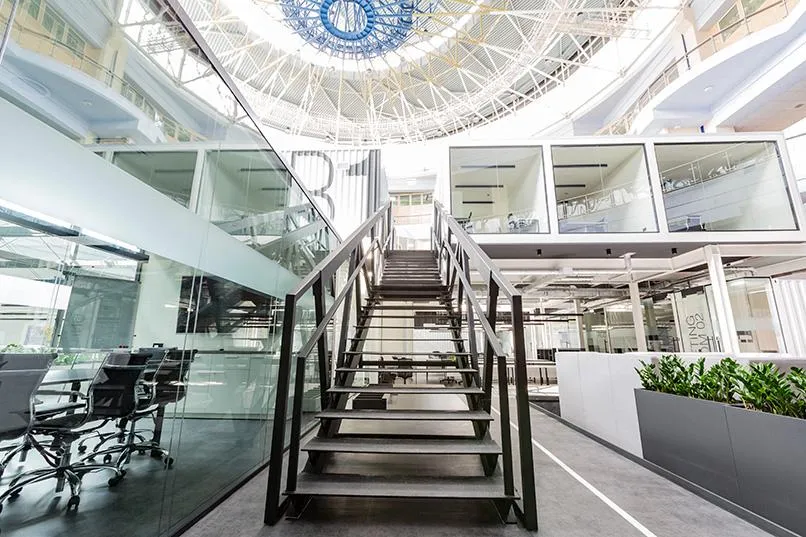
The Expansion Trap: Why Bigger Isn’t Always Better in Business Growth
In business, growth is often celebrated as the ultimate measure of success. More employees. More locations. More revenue. But in the race to scale, many entrepreneurs fall into what I call the Expansion Trap—where “bigger” doesn’t always mean “better.”
Unchecked growth can stretch a company’s infrastructure, dilute its culture, and create costly inefficiencies. The very drive that once propelled the business forward becomes the same force that drags it down.
Let’s unpack why so many businesses stumble when scaling—and how to grow intentionally rather than impulsively.
1. The Illusion of Progress: When Growth Outpaces Strategy
Growth feels like progress—but rapid scaling without strategy can actually undermine it.
Many founders mistake motion for momentum, expanding operations, hiring quickly, and chasing new markets before the foundation is ready.
Consider the story of EcoSource, a fictional but familiar example.
When EcoSource scaled from 20 to 300 employees within two years, it lost more than just structure—it lost alignment. Teams operated in silos, priorities conflicted, and once-efficient communication dissolved into chaos.
The lesson: growth without direction leads to fragmentation.
How to Stay Aligned
Define a clear, measurable mission before expanding.
Establish a centralized communication rhythm—weekly syncs, cross-department check-ins, and transparent OKRs.
Use scalable management systems (like EOS or KPI dashboards) to maintain visibility across teams.
The goal isn’t just expansion—it’s coordinated expansion that preserves what made the company successful in the first place.
2. The Hidden Costs of Complexity
With every layer of growth comes new layers of complexity: more people, more processes, and more points of failure.
Many businesses find themselves working harder yet profiting less—a classic Expansion Trap symptom.
Case in point: GreenTech, another composite example, expanded operations nationwide in one year.
Sales grew 60%, but profit margins collapsed due to logistics costs, redundant staffing, and mismatched systems across regions.
Their growth became a liability.
Avoiding the Complexity Spiral
Audit before you expand. Run a cost-benefit analysis of every new location, hire, or system.
Eliminate redundancies. Automate or centralize repetitive functions like billing, payroll, and reporting.
Grow your systems before your staff. Software, not headcount, should absorb early-stage growth pressure.
Sustainable business growth means scaling profitably, not just numerically.
3. The Leadership Paradox: More People, Less Control
When your business is small, you can see and influence everything.
But as it grows, leaders often try to manage expansion the same way they managed the startup phase—by staying hands-on. That approach quickly collapses under the weight of complexity.
Trying to control every detail of a growing operation is like steering a cargo ship with a kayak paddle. It’s exhausting and ineffective.
How to Regain True Control
Automate routine decisions so leaders can focus on direction, not details.
Develop leaders within your team. Teach managers to make confident, aligned decisions without constant oversight.
Adopt scalable systems. Enterprise resource planning (ERP), workflow automations, and performance dashboards can help maintain alignment without micromanagement.
Control isn’t about doing everything yourself—it’s about designing a business that can function without your constant presence.

4. Culture Drift: The Silent Killer of Expansion
Culture is easy to maintain when everyone fits around one table. It’s much harder when teams span offices, time zones, and cultures.
Yet this drift—when shared values and energy begin to fade—is one of the most dangerous byproducts of growth.
Once culture erodes, accountability slips, innovation stalls, and employee engagement tanks.
How to Preserve Culture While Scaling
Codify your values early. Put your mission, vision, and principles into writing before hiring en masse.
Hire for alignment, not just skill. Every new hire should strengthen your cultural DNA.
Create rituals that connect teams. Weekly wins, internal recognition systems, and cross-department collaboration fuel unity.
Culture isn’t static—it’s a living asset that must grow in sync with your organization.
5. The Sustainability Principle: When Growth Becomes Endurance
The most successful companies don’t scale the fastest; they scale the smartest.
They view growth as a long-term endurance race, not a sprint.
Let’s contrast two fictional examples:
RapidTech scaled aggressively, chasing quarterly numbers. Within two years, operational chaos led to massive layoffs.
SteadyWorks, on the other hand, focused on sustainable growth—investing in systems, people, and processes before expanding. Over the same period, its profitability and employee retention doubled.
What Sustainable Business Growth Looks Like
Predictable cash flow rather than unpredictable bursts.
Repeatable systems that don’t rely on heroic efforts.
Empowered teams that make aligned decisions autonomously.
Sustainability isn’t anti-growth—it’s what allows growth to last.
6. Warning Signs You’re in the Expansion Trap
If your company is growing but feeling weaker, take a closer look. These red flags often appear before major burnout or decline:
Profit margins shrink even as revenue grows.
Decision-making slows due to bureaucracy.
Internal communication feels fractured.
Employee morale drops after expansion.
Leadership spends more time managing fires than pursuing vision.
Recognizing these early warning signs gives you time to recalibrate before growth turns toxic.
7. Escaping the Trap: The Framework for Sustainable Growth
If you suspect your business has fallen into the Expansion Trap, don’t panic—it’s reversible.
Use this three-step framework to regain control and realign your trajectory:
Step 1: Simplify
Reduce unnecessary layers. Audit every process and ask: Does this add value or friction?
Streamline meetings, approvals, and software tools to free up bandwidth.
Step 2: Systemize
Build reliable processes that scale without chaos. Automate wherever possible, document workflows, and establish a repeatable rhythm for operations.
Step 3: Strengthen
Focus on team development, culture, and leadership growth. These are your real multipliers—without them, systems are just tools.
When you simplify, systemize, and strengthen, your company becomes leaner, faster, and more resilient.
8. Redefining Growth: The Power of Strategic Restraint
Real leadership isn’t about doing more—it’s about doing better.
Saying “no” to misaligned opportunities is a sign of maturity, not limitation.
Every business reaches a stage where the next phase of growth requires patience, focus, and stability. That’s where lasting success is forged.
Remember, bigger isn’t better—better is better.
Download: “The Sustainable Growth Blueprint”
Before you expand further, ensure your foundation can handle it.
This free David Rivero guide helps you evaluate your systems, leadership, and culture for scalable, sustainable growth.
Inside you’ll learn:
How to audit your business for expansion readiness
A checklist for managing complexity during scaling
Key performance indicators for sustainable growth
Team alignment frameworks that preserve culture
Download the Free Sustainable Growth Blueprint Now
Rapid growth means little if it costs your peace, purpose, or people.
If you’re scaling your business and want to do it sustainably—without burnout or chaos—I can help.
As a growth strategist and entrepreneur, I help founders build scalable systems that align with their values and long-term vision.
Visit DavidRivero.com to start building a growth strategy that lasts.
FAQs
1. What is the Expansion Trap?
The Expansion Trap occurs when businesses grow faster than their systems, culture, or leadership structure can support—leading to inefficiency and burnout.
2. How can I tell if my company’s growth is unsustainable?
Warning signs include shrinking profit margins, poor communication, leadership bottlenecks, and cultural misalignment.
3. What’s the difference between sustainable and rapid growth?
Rapid growth focuses on short-term metrics, while sustainable growth prioritizes stability, profitability, and long-term scalability.
4. How do I keep my team cohesive as the business grows?
Set clear values, over-communicate priorities, and invest in leadership training to ensure alignment at every level.
5. When should I slow down expansion?
If growth starts increasing complexity faster than it increases capacity, it’s time to pause, streamline, and strengthen your foundation.
